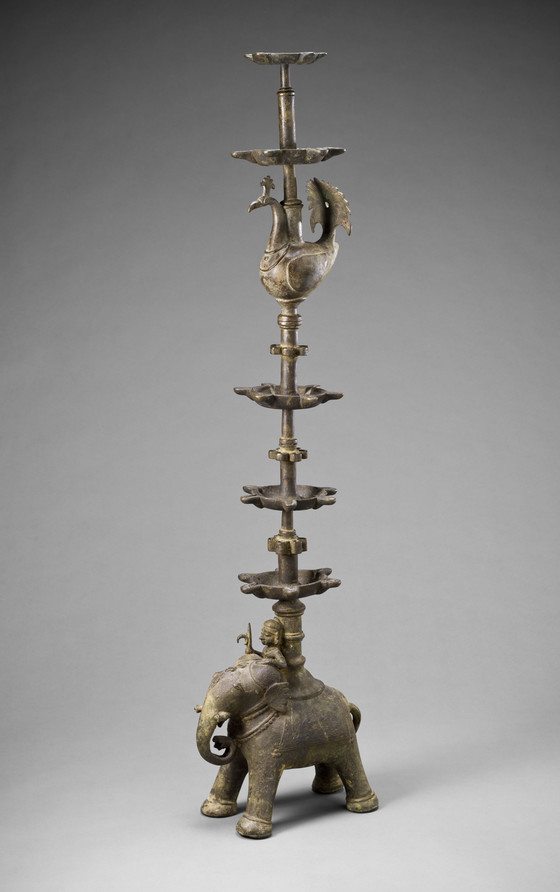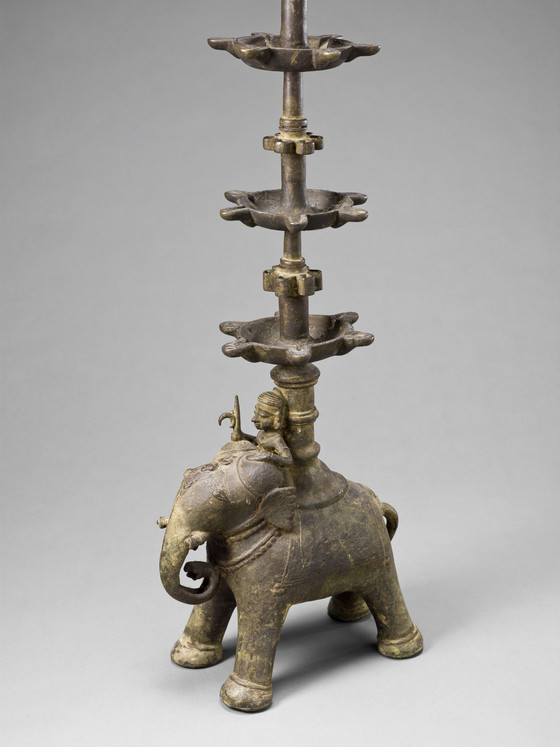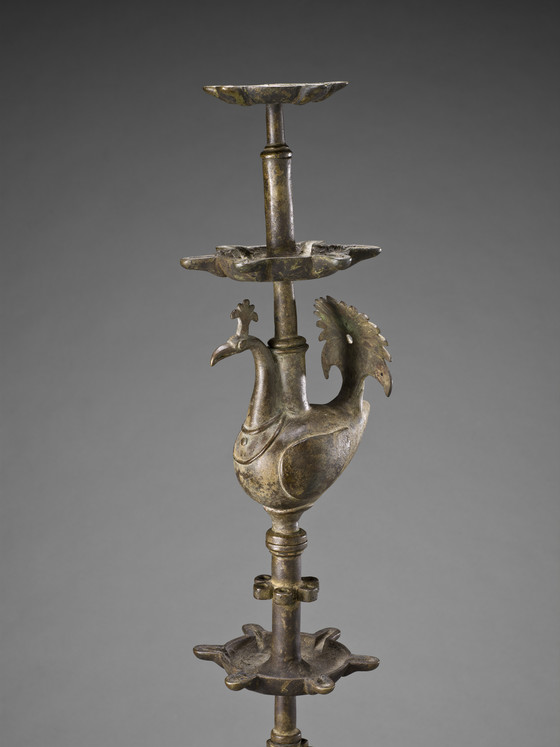Oil Lamp (samai) with a Peacock and an Elephant Base



Please log in to add this item to your gallery.
View comments
No comments have been posted yet.
Add a comment
Please log in to add comments.
Please log in to add tags.
* Nearly 20,000 images of artworks the museum believes to be in the public domain are available to download on this site.
Other images may be protected by copyright and other intellectual property rights.
By using any of these images you agree to LACMA's Terms of Use.
Oil Lamp (samai) with a Peacock and an Elephant Base
India, Maharashtra, 18th century
Furnishings; Lighting
Copper alloy
40 1/4 x 5 1/2 x 10 in. (102.24 x 13.97 x 25.4 cm)
Gift of Leo S. Figiel, M.D., in honor of Dr. Pratapaditya Pal (AC1995.152.1)
Not currently on public view


